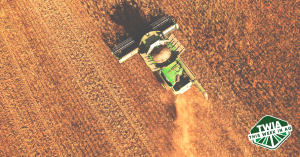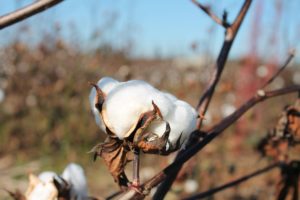Earl Butz, one of the most famous and popular US Secretaries of Agriculture, once told me that a key competitive advantage for US farmers in the global marketplace is our built-in natural infrastructure. Our Great Lakes and river system is perfectly designed to transport grain efficiently. The Mississippi River is the backbone of our agricultural transportation system: 60% of all grain exported from the USA is shipped by barge down the Mighty Mississippi. It’s also the most efficient means of bulk transport, from a cost and sustainability standpoint. A single barge can carry the load of 60 trucks – and you can strap 15 barges together in a single tow. But river levels in Memphis are approaching last year’s historic record lows, reaching levels of -10.61 this past weekend. This can confine barge traffic to one-way, and barges are now forced to operate less than full. This is creating serious bottlenecks. The ADM terminal in Memphis is no longer taking corn, as they have no way to move it. But farm outputs aren’t the only items of commerce impacted by decreasing navigability. Fertilizer is also shipped by barge, and fall is a prime time to move it. Granted, it’s been very dry in the Mid-South over the past two months. But these issues are largely coming from upstream, as many areas of the Midwest have experienced drought conditions over the past year.
On Wednesday at 4:00 pm, Huma is being featured on the “Made in Arizona” series on FOX-10 Phoenix. A few weeks ago, in conjunction with our new brand launch and 50th anniversary, a TV crew from the station interviewed members of our team and shot video footage. This should be a fun segment.
You hear me talk frequently about farmland prices, and how we are living in a new era where conventional market dynamics are no longer in play. The influx of non-traditional buyers, new revenue streams, inflation and competition from enterprises like solar farms are driving this paradigm. Those claiming the recent interest rate hikes and lower commodity prices will put a stop to this run-up please take note: at a recent auction, a 115-acre farm sold for a record-breaking $34,800 per acre in Missouri. And obviously, there was a second bidder. Now, we’re not talking about an award-winning vineyard or almond orchard mind you. This is land that grows corn and soybeans. With no commercial development potential. And believe it or not, in this case, the buyer is not an investor. He is a farmer from a neighboring county. Word has it the sale was a cash purchase. It had to be. Let’s put this in perspective. If you put down 20%, at a current fixed interest rate of 7.88%, you’d need to average 350 bushels per acre of corn (average corn yield in Saline County, MO is 206 bu/A) and sell it for $7.00 per bushel (the highest corn price on the CBOT in 2023 was $6.84) to barely cover just the land cost. Of course, the question that begs to be asked is, is there a better way to invest $4 million? High land prices are a double-edge sword for farmers. It’s great if you have it, bad if you want it. Many farmers operate, or even live off, their equity. As a farmer’s most valuable asset, high land prices are balance sheet boosters and open greater credit opportunities. But if you’re looking to expand, or if you’re a beginning farmer, they can put expansion out of reach. And they also drive-up cash rents.
Saturday is #WorldCottonDay. While China and India are the leading producers of cotton – growing about half of the world’s supply – the USA is the leading exporter, with 35% of our 20 million bales going to foreign markets such as China, Vietnam, Pakistan and Turkey. The world’s most popular fiber is also the most sustainable. Cotton is all-natural, and recyclable. And in the USA, growing methods are becoming more sustainable. That’s due to consumer demand: 61% of brands and retailers see an increased demand for sustainable products. Regenerative agriculture is growing in popularity with cotton growers, who take their cues from fashion marketers and consumers. Few crops evoke the passion and pride among their growers like cotton. I’d say it’s on par with vineyards. You don’t have to spend much time with a farmer for them to mention they are indeed a farmer. But for those who grow the fabric of our lives, they proudly refer to themselves as cotton farmers.
Saturday marks the 135th birthday of Henry A. Wallace – scientist, editor, politician, and one of agriculture’s greatest pioneers. It’s only foretelling that his mother spent the day tending her garden before giving birth to her son that evening in the family’s Orient, Iowa, farmhouse. His family was deeply rooted in agriculture, owning Wallace’s Farmer, one of the most influential farm publications of the time, and remains so even today. If his family legacy wasn’t enough to prepare him – his father served as US Secretary of Agriculture under Warren G. Harding – Henry was mentored by his father’s friend, none other than George Washington Carver. Henry became editor of Wallace’s Farmer, where he established the state’s corn yield contest, husking contest and Master Farmer awards (still being awarded today). He went on to become US Secretary of Agriculture for FDR during the depression years. During these desperate times, he established the first Food Stamp plan, worked on the New Deal and established farm subsidy and soil conservation programs that became the blueprint for today’s farm policy. He visited every state in the union during his first year as Secretary, offering hope to farmers. He was elevated to Vice President of the United States in 1940. He’s most famous, however, for founding what would become the Pioneer Hi-Bred Seed Company in 1926, the world’s first and largest hybrid seed company. This gave farmers access to one of the most significant advancements in farming since the invention of the plow. In 1933, hybrid seed corn was planted on just 1% of Iowa corn acres. Within ten years, nearly 100% of Iowa farms planted hybrid seed. During that span, yields increased nearly 33%. Later in life, Wallace took to another form of breeding, with chickens. At one time, over half of all egg-laying hens in the world were part of his line of birds. Henry A. Wallace was named the “Most Influential Iowan of the 20th Century.”
Related Posts

This Week In Ag #89
Scary season is upon us. This week our doorsteps will be invaded by legions of mini goblins. Their biggest fear is receiving candy corn in their baskets. But what about farmers? What’s scaring them this Halloween?

On The Brink: Farm Crisis Fears
Corn growers and specialty crop producers are facing mounting financial pressure as input costs soar and commodity prices drop. With farm aid ramping up and the DOJ investigating antitrust concerns, U.S. agriculture sits on the edge of a potential crisis.

Research Report: Huma Gro® X-Tend® B Improves Barley Yield with a ROI of 38:1
In research conducted at the University of Idaho, Huma Gro® X-Tend® B, powered by Micro Carbon Technology® (MCT), has proven to improve barley yield. The boost in production led to a higher net gain per acre with a return on investment (ROI) of 38:1.


